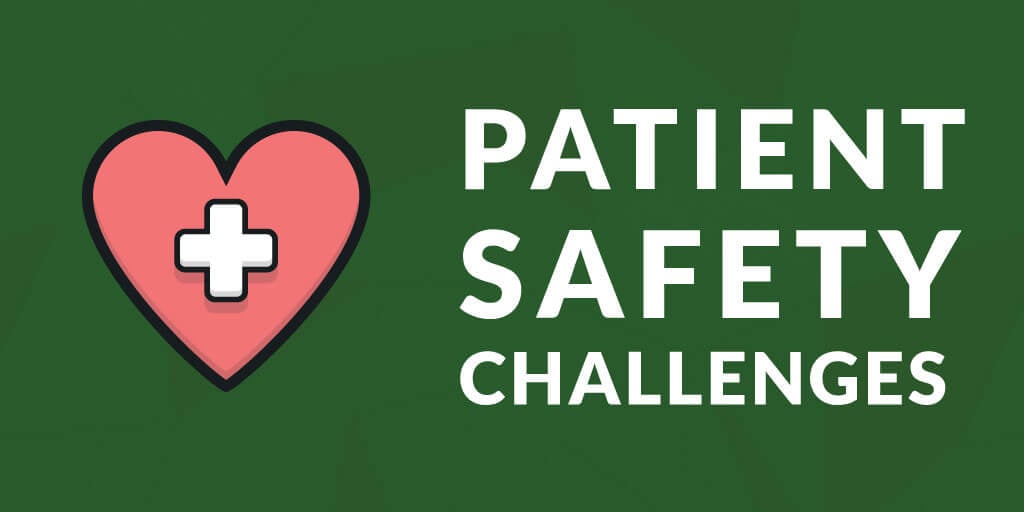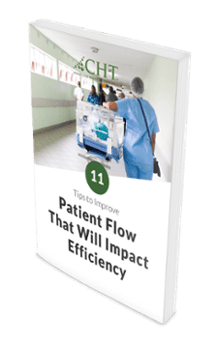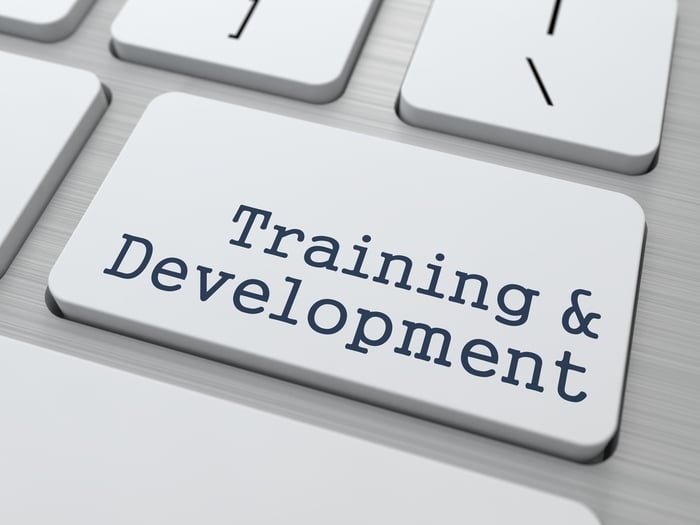
Do you want to improve patient safety in your healthcare organization?
The smallest improvement may have a large impact on patient safety. As a hospital leader or healthcare facility manager, you are held accountable for managing effective care while maintaining a safe environment for patients, staff, and visitors.
There are WAY too many obstacles that could stand in your way. With all the moving parts that make up a healthy, thriving healthcare environment, creating a safe healthcare experience may seem too difficult to achieve.
You could say, "anyone that touches a patient or anything that touches the patient must wash their hands". Certainly, it would help to improve patient safety, and it'd be a start. It’s important to understand that a procedure or rule is only effective when followed.
How do we get patients, staff, and visitors to follow the rules? By making sure they are implemented effectively, of course.
If only it were that easy...
You need to be very systematic with your approach and how you implement patient safety in a healthcare environment.
Today, I'm going to show you 9 ways that almost guarantees your facility will be safer and run more effectively.

9 Patient Safety Challenges and Your Action Needed
1
Communicate - Lack of Staff Communication Creates Adverse Events
Effective communication seems like an easy concept to utilize in a healthcare facility. However, your staff (and maybe even you) may not properly communicate with each other, senior members, or staff in leadership positions due to fear of reprimands or feeling inferior.
Opening the lines of communication takes practice and will increase the overall well-being of your facility. Being an efficient advocate for your patients depends on the ability to participate effectively in difficult and critical discussions.
Crucial Conversations: Tools for Talking When Stakes Are High, a book by Kerry Patterson, talks about navigating "a crucial conversation, as opposed to a casual exchange, a discussion between two or more people about tough issues where opinions vary, stakes are high, and emotions run strong."
Learning to understand the types of conversations you encounter as a healthcare facility manager can strengthen your relationships and revitalize your organization.
In a Harvard Business Review article, Andrew Winston reiterates how employees must feel safe and empowered to speak up.
You might've been in a similar position.
He makes the case that leaders must often "assess whether their cultures allow their own employees the power and safety to stand in front of the train of fast-moving stupidity and say, "You shall not pass!" And they need to have executives who will listen to them."
Once people become afraid to speak up, they'll justify their silence.
How can you overcome this challenge?
By implementing a better safety culture.
2
Implement a Better Safety Culture
As facility managers, one of your leadership roles is developing a safety culture. Data reflects a direct correlation between a healthcare facility's safety culture and patient safety improvement.
The Joint Commission(TJC) called attention to this interrelation between culture and safety in a Sentinel Event Alert issued earlier this year. TJC's Sentinel Event Database reveals that "leadership's failure to create an effective safety culture is a contributing factor to many types of adverse events - from wrong site surgery to delays in treatment."
Complimentary to the Sentinel Event Alert, the Joint Commission’s President and Chief Executive Officer Mark Chassin, MD, FACP, MPP, MPH, offers guidance on achieving the essential first step toward high reliability.
Building Your Safety Culture: A Job for Leaders
"Without this environment of trust and respect, patients are significantly more likely to experience adverse outcomes of varying degrees of severity. Therefore, leaders must embed this culture throughout their hospital, healthcare system or healthcare organization."
3
Go Transparent With Quality Data to Avoid Future Mishaps
Collecting and utilizing data will improve patient safety. Data collection procedures should be perfected throughout the professional healthcare workforce.
Reporting the incidents allows the data to be measured and analyzed, avoiding future mishaps. By identifying the potential areas leading up to a harmful or neglectful situation, healthcare leaders are able to take practical steps to create a safer working environment.
As a healthcare leader, you should advocate for the critical importance of detailing all incidents.
For example, did a shift change create a higher number of incidents or accidents involving the patient's overall safety?
Use the information to build a better working model for patient safety procedures. Transparency is key and a necessity for healthcare. The insights gained will help you develop better practices and processes for your healthcare facility.
4
Key Staffing Will Eliminate Poorly Managed Work Environment
Highly trained and educated employees will play the most significant role in keeping and providing patients safe during their hospital stay.
Before placing employees in direct contact with patients, check all necessary background information, credentials, and education to ensure the highest level of care. Poorly trained staff reduces the overall effectiveness of patient care.
Provide each shift with the correct staff-to-patient ratio. If an employee becomes overworked, the quality of care can decrease, which will create an unsafe environment for patients.
Reducing employee hours may look good on the budget sheet; however, quality patient care requires time and interaction. Staff members who feel pressured to rush will make mistakes.
Consider eliminating or reducing the number of temporary employees. In order to engage properly, staff members should be highly familiar with the healthcare facility and its policies. The constant switching of employees may create a poorly managed work environment.
5
Continuing Education and Awareness Will Decrease Incidents

Patient safety protocols may need to be upgraded or changed over the year to help implement more efficient procedures. During times of change, employees need to be educated and made aware of new procedures to maintain the highest level of care.
Ways to keep your employees engaged...
- Promote lifetime learning for all healthcare providers, employees, senior staff, and others who engage in patient interaction.
- Allow healthcare employees to help in the preparation of changing safety protocols and advance health directives involving patients at each level of care.
- Give employees chances to further education through various methods, including paid in-services, conferences, or workshops. Remember: New techniques may have a significant impact on safety protocols creating a decrease in patient incidents and readmissions.
According to a Gallup study, there seems to be a connection between employee engagement and healthcare outcomes. The study found that "hospitals with higher nurse engagement levels have statistically lower mortality and complication indices."
"Healthcare facilities that are in the top half of Gallup's healthcare database -- a compendium of the results of every healthcare organization Gallup has studied -- have average monthly inpatient mortality rates that are around 30% lower than those of organizations in the bottom half.
Facilities that are in the top half of the same database have 20% to 25% fewer medication errors. And not incidentally, facilities in the top half yield average net revenue per adjusted patient discharge (case mix adjusted) that is 8% higher than facilities in the bottom half of the database."
6
Curtail Hazardous Conditions
Hospitals that adhere to their mandatory care tours will identify potential hazards. Alarm safety should be a priority.
Make improvements to ensure that alarms on medical equipment are heard by staff and responded to on time.
At every step between the source and the patient, there are alarms warning of a lack of supply and changes in the quality of the medical gasses being delivered. The most important action to be taken by the person that monitors a master alarm is to ensure maintenance is immediately notified.
Annual inspections can safeguard continuous gas flow and uninterrupted service, which will keep your facility and patients safe.
7
Strive to Achieve the Patient Safety Excellence Award
This year, 460 hospitals across the nation achieved the Healthgrades Patient Safety Excellence Award.
"On average, 134,568 patient safety events could have been avoided if all hospitals performed similarly to hospitals performing better than expected on each of 13 patient safety indicators evaluated by Healthgrades."
This is where your eyes widen, and you're aware.
Winners showed lower rates of hospital complications, preventable infections, and other deadly medical errors.
"It's one of the most critical facets of health and a primary indicator of successful outcomes for patients."
Healthgrades 2018 Report to the Nation states the three key indicators of care quality:
- Physician Experience
- Patient Satisfaction
- Clinical Outcomes
In short, not all hospitals are the same, and patients need to know these quality differences before they choose where to receive care.
"The Healthgrades research reveals hospitals that prioritize patient safety are also more likely to achieve high-quality outcomes for their patients."
8
Go After Hospital-Acquired Infections With a Vengeance
Numbers are a tell-all. Up to 69% of hospital-acquired infections are preventable through known quality measures, primarily better cleaning, especially hand hygiene.
While hospitals perpetually strive to provide a clean, safe environment for their patients, staff, and visitors, the fight against aggressive pathogens is real and becoming more challenging.
We recently wrote an article on this specific topic:
Prevention and Control Strategies for Nosocomial Infections
Regarding infections in hospitals, "the right benchmark is always zero," states Denise Murphy, former president of the Association for Professionals in Infection Control and Epidemiology. A zero infection benchmark is her response to the many hospitals that measure themselves against national averages, such as three infections per 1,000 patient days. “If hospitals do as well as or slightly better than their peers, they are satisfied.”
That sets the bar way too low.
Be the healthcare facility that doesn't settle. "Look for poorly designed processes and try to fix them." Be the facility where the employees are upset when you have one infection.
9
Enhance Your Work Performance with Technology
We've all been there...
You come into the office and spend time rifling through paperwork, and you never even find the documents you need.
- IDC data shows that “the knowledge worker spends about 2.5 hours per day, or roughly 30% of the workday, searching for information….60% [of company executives] felt that time constraints and lack of understanding of how to find information were preventing their employees from finding the information they needed.” Source
I think we can agree most everyone would like to be more efficient. Undoubtedly, increased efficiency will allow more time for the work that matters -- patient safety.
Technology can make healthcare systems operate more efficiently with less frustration, saving you time and money.
Imagine as a facility manager the feeling when an inspector comes in and demands to see the condition and history of an asset, and you confidently and quickly present it.
A properly implemented healthcare system monitoring software can help you do just that.
Conclusion
So, what's the answer?
Education plays a key role in implementing patient safety. Healthcare professionals need to follow a systematic approach in their daily routines to maintain a healthy environment.
In healthcare facilities, patient safety is a top priority but does come with its challenges. Healthcare professionals can join together to open the line of communication, develop a safety culture, be transparent, and strive to achieve excellence.
The solutions to current and future patient safety challenges are about proper information and education but, more importantly, the implementation of the knowledge.




